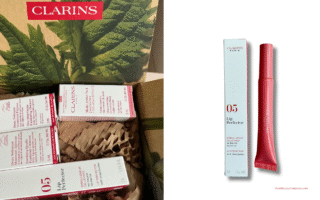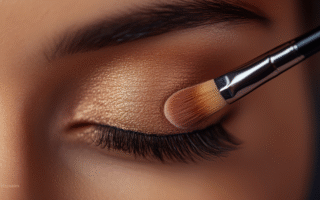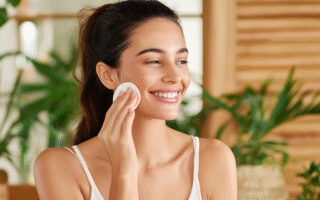There’s a growing movement in the beauty world that’s rooted not in hype, but in health. From the pink polish we swipe across our nails to the serums and sprays we use daily, more consumers are asking: what’s really in these products? Clean beauty may seem like a modern buzzword, but at its core, it’s a response to something very real—the widespread use of potentially harmful chemicals in our everyday personal care routines. One of the most concerning? Phthalates.
Phthalates are a group of chemical compounds often used to soften plastics, but they’re also used in personal care products to stabilize fragrance, increase spreadability, and prolong shelf life. Unfortunately, mounting evidence links certain phthalates to serious health concerns: hormone disruption, reproductive toxicity, and even developmental risks to unborn babies. For pregnant women in particular, exposure to these compounds is a red flag. Research suggests prenatal phthalate exposure may contribute to cognitive and behavioral issues in children and increase the risk of preterm birth.
What makes this even more troubling is the lack of transparency. Phthalates are rarely listed on ingredient labels. Instead, they’re typically hidden under generic terms like “fragrance” or “parfum”—terms that don’t disclose the full chemical makeup due to trade secret protections. That means unless a brand voluntarily commits to phthalate-free formulas, consumers are often left guessing.
Voluntary Transparency: When Beauty Brands Do the Right Thing
Thankfully, some major global brands are beginning to speak out. Take Clarins, for example. On their official site, the French beauty giant explicitly addresses the risks associated with harmful substances such as phthalates, stating:
“The issue with this family of chemical compounds? They have carcinogenic and mutagenic effects and can be toxic to reproduction… Yet despite this authorisation, Clarins does not use phthalates of any kind in its formulas, including DEP.”
Even though one form of phthalate—Diethyl Phthalate (DEP)—is still legally permitted in cosmetics and considered low risk by regulators, Clarins has chosen to eliminate it entirely from their products. Instead, they use an alternative denaturant called ethylene brassylate, a synthetic musk compound commonly used in fragrance formulations. While not universally classified as “clean” by all standards, ethylene brassylate is considered a safer substitute for phthalates and is not currently linked to the same level of reproductive or endocrine concerns.
This shift reflects a broader movement in the beauty industry: reducing or eliminating ingredients with known or potential health risks, even when they’re legally allowed. Clean beauty isn’t about perfection—it’s about progress, transparency, and making more informed choices based on evolving science and consumer demand.
From Toxic to Toxin-Free: How Nail Polish Got a Clean Beauty Makeover
Nail polish has long been a staple of self-expression, but many traditional formulas once included harmful chemicals—phthalates among them. Specifically, dibutyl phthalate (DBP) was commonly used to make polish flexible and chip-resistant. As awareness of phthalates’ health risks grew, especially their potential effects on hormones and reproductive health, consumers and advocacy groups began demanding safer alternatives. In response, many major brands have reformulated their products, eliminating DBP and other toxic ingredients as part of what’s now known as the “3-free” or even “10-free” movement—labels that indicate which harmful chemicals have been removed. Today, more clean beauty nail polishes are available than ever, offering vibrant color without compromising your health.
Why Gitti Is 30-Free
Gitti doesn’t just remove a few harmful ingredients—they’ve committed to excluding entire chemical groups known for their health and environmental risks. Their nail polish avoids 30 questionable substances, including formaldehyde, phthalates like DBP, synthetic fragrances, microplastics, animal-derived pigments, and more. Clean beauty at its most transparent.
- Formaldehyde
- Formaldehyde releasers
- Animal-derived ingredients
- Sulfonamides
- Xylene
- Toluene
- Phthalates (e.g. DBP)
- Camphor
- Triphenyl Phosphate
- Triclosan
- Acetone
- Cyclic silicones
- Colophonium/Rosin
- Hydroquinone
- Diethylhexyl adipate
- Tert-Butyl Hydroperoxide
- Synthetic fragrance
- Benzophenones
- Mineral oils/waxes
- Ethoxylated ingredients
- EDTA
- Microplastics
- 4-Methoxyphenol (MEHQ)
- Lead and compounds
- Nano pigments
- Sulfates
- Polytetrafluoroethylene
- Ethanolamines
- Controversial mineral pigments
- Parabens
Beyond the Buzzword: Why Clean Beauty Truly Matters
So no, clean beauty is not a fleeting trend. It’s a shift toward transparency, safety, and science-backed decision-making. It’s about demanding better from brands and regulators alike. And it’s about protecting ourselves—especially the most vulnerable among us—from ingredients that shouldn’t be part of self-care.



